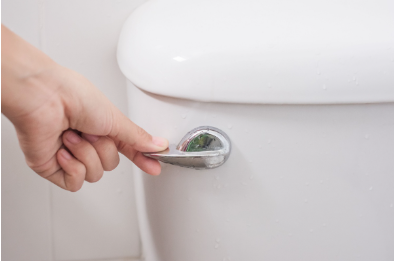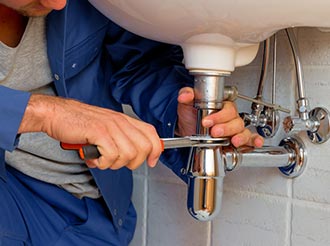
Our planet is a large and unique place. In it, we have resources that we rely on to survive. Those resources are limited though and it falls to us to learn how we can help to conserve them for future generations.
Conserving water is one of those ways we can help. It may seem easy to use less water when we wash our dishes or take shorter showers.
Unfortunately, there are some appliances that we own that do not have control over the amount of water they consume. Bathroom toilets are one such appliance, which is why low-flush toilets are important to consider for water conservation.
What Are Low-Flushing Toilets
Low flushing toilets have the same look as any other toilet but they are designed to use nearly 20 percent less than the current federal standard of 1.6 gallons per flush.
Even with this in mind, older toilet models that haven’t been replaced still use nearly 6 gallons of water per flush. If you live by yourself and only flushed once a day, that’s still 180 gallons of water you use in a month.
According to the Environmental Protection Agency, toilets account for 30% of the average household's indoor water consumption. Low flush toilets were made to save thousands of gallons of water per year in a single household.
How Do They Work?
Since low flush toilets use less water, it makes a person wonder how waste doesn’t get trapped in the U-bend. Well, they use one of two methods: gravity or pressure assistance.
Low-flush toilets that use gravity push the water from the toilet bowl and guide the waste through the pipes to the septic tank.
Pressure-assisted toilets have a built-in pressure tank that acts as a giant water balloon. As the tank fills up, it holds the water there under pressure until it is flushed.
Can Low-Flush Toilets Save Money on Your Water Bill?
Absolutely! One of the primary benefits of low-flush toilets is their potential to save you money. Here’s how:
Reduced Water Consumption
Since low-flush toilets use less water per flush, your overall water consumption decreases. Over time, this can lead to substantial savings on your water bill. For a family of four, replacing older toilets with low-flush models can save thousands of gallons of water annually.
Lower Utility Bills
Less water usage directly translates to lower water bills. While the initial cost of installing a new low-flush toilet may seem high, the long-term savings are worth it. Imagine cutting down your water bill by 20-50% — that’s more money in your pocket each month.
Environmental Benefits
Saving water isn't just about reducing your bills; it's also about conserving a vital resource. By using a low-flush toilet, you're contributing to water conservation efforts, which is increasingly important as water scarcity becomes a global issue.
How to Choose a Low-Flush Toilet
Selecting the right low-flush toilet for your home involves considering several factors. Here are some tips to help you make the best choice:
Flush Performance
One of the primary concerns when choosing a low-flush toilet is its flushing performance. You want to make sure that it can handle solid waste effectively without frequent clogs. Look for toilets that have good reviews on performance, as not all low-flush toilets are created equal.
Gallons Per Flush (GPF)
When shopping for a low-flush toilet, pay attention to the GPF rating. The lower the GPF, the less water it uses per flush. Some modern high-efficiency toilets use as little as 1.28 GPF while maintaining good performance.
Dual Flush Option
Consider dual flush toilets that offer two flushing options: a low-volume flush for liquid waste and a higher-volume flush for solid waste. This feature can save even more water by giving you control over how much water is used per flush.
Installation and Compatibility
Confirm that the toilet you choose is compatible with your existing plumbing. While most low-flush toilets are designed to fit standard bathrooms, it’s always a good idea to double-check. If you’re not comfortable with the installation process, give S and J Plumbing a call. Our plumbers in Arlington Heights are available 24/7 to help with all your needs.
Misconceptions About Low-Flushing Toilets
Despite their benefits, there are some misconceptions about low-flush toilets that may make homeowners hesitant to make the switch. Let’s debunk a few of these myths:
They Don’t Work Well
A common misconception is that low-flush toilets don’t work as well as traditional toilets. While it’s true that earlier models had issues with performance, modern low-flush toilets are designed to handle waste efficiently. Advances in flushing technology have greatly improved their effectiveness.
They Are Expensive
Another myth is that low-flush toilets are significantly more expensive than traditional ones. While the upfront cost may be slightly higher for a water-saving toilet, the savings on your water bill and potential rebates can offset the initial investment.
They’re Only for New Homes
Many people think low-flush toilets are only suitable for new homes or renovations. In reality, a water-saving toilet can be installed in any home, old or new. It’s a straightforward process that can yield substantial water savings.
They’re Uncomfortable
Some believe low-flush toilets are uncomfortable or have a different design. Most low-flush toilets have the same design and comfort features as conventional toilets, so you won’t notice any difference in your bathroom experience.
Additional Tips to Reduce Your Toilet Water Usage
Switching to a low-flush toilet is a great start, but there are other ways to save water in your bathroom. Let's discuss how to reduce toilet water usage:
Consider Upgrading Older Toilets
If you have older toilets that use more water, consider replacing them with new, high-efficiency toilet models. The initial investment in a water-saving toilet will pay off in water savings over time.
Fix Leaks Promptly
A leaky toilet can waste a significant amount of water. If you hear the toilet running when it hasn't been flushed, it’s likely you have a leak. One of the most noteworthy tips to reduce your toilet water usage is to address problems as soon as possible. Replacing a worn-out flapper valve or other malfunctioning parts can stop the leak and save water.
Conduct Regular Maintenance
Regularly check your toilet for any issues and perform necessary maintenance. A well-maintained toilet will perform better and use less water. Simple steps like cleaning the flapper valve and adjusting the water level can make a big difference.
Try the Food Coloring Test
To check for leaks, add a few drops of food coloring to your toilet tank. If the color appears in the toilet bowl without flushing, you have a leak that needs fixing.
Mindful Flushing
Avoid using your toilet as a trash can. Flushing items like tissues, cotton balls, or sanitary products not only wastes water but can also lead to a clogged toilet. Use the flush only when necessary.
Educate Your Family
Encourage your family to be mindful of their water consumption and share these tips to reduce your toilet water usage. Simple habits like not using the toilet as a trash can and being conscious of the flushes can lead to significant savings.
The Bottom Line
Low-flush toilets offer a practical solution for reducing water usage and saving money on your water bill. With advancements in flushing technology, these water-saving toilets provide effective performance while conserving a valuable resource. By choosing the right model and implementing additional tips to reduce your toilet water usage, you can make a positive impact on both your wallet and the environment.
Why Pay Attention to Your Water Usage?
By switching to a more energy and water-efficient toilet, we can save millions of gallons of water each year.
The EPA noted that if every household in the nation replaced older models, that number would jump to billions of water saved.
That’s equal to the amount that flows over the Niagara Falls in a week. Being aware of the problem and acting on it are two different things. Taking the time to educate yourself on the matter is one step closer to being a part of the solution.
Thank you to those of you who took the time to read this article and learn about one of the ways you can help to conserve water. If you would like to understand other ways you can decrease your water consumption, check for leaks around your home, as this can be a major cause of wasted water.You can also visit the EPA website if you wish to learn more about how much water your other appliances consume. Or, ask our local plumbers, and we’ll be happy to assist you with your plumbing needs!




